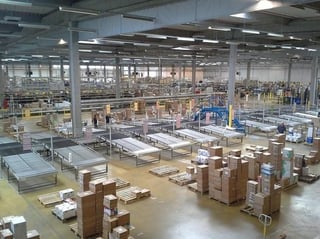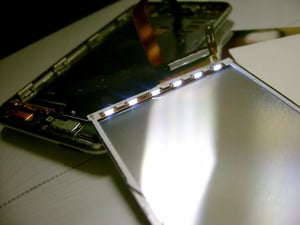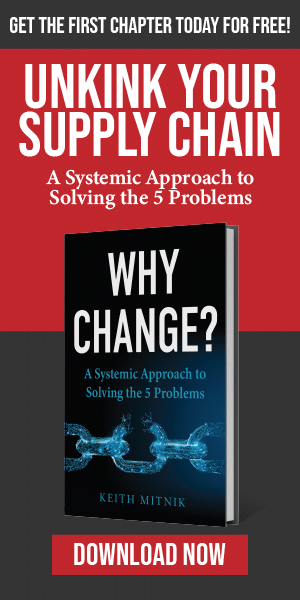Line down issues on any product line is traumatic, especially if you’re the one purchasing and managing the parts. If just one sub-component is not ready, the whole production line comes to a screeching halt. Late or short component deliveries are the main cause of a line down situation.
But it’s possible to proactively prepare to prevent future line down issues. Read on to discover how to avoid line down and keep your line at peak efficiency.
Design or Choose Components Efficiently
Considering all factors when creating a product configuration is the holistic approach to design. It always starts with performance, then cost, but it doesn’t stop there. Also consider the complexity of the component requirements, lead-times, ease of component replacement and the overall obsolescence mitigation of this component.
For a mid- to high-volume product it’s typical to design with semi-custom or full custom LCD displays. This customization typically leads to better product integration and lower overall system level cost with optimal performance. Narrower specialization doesn’t always mean that you run a higher risk of a line down situation due to the LCD component availability. The trick is to understand the supply chain behind the LCD. Ask yourself; Who owns the tooling for each component of the display? How long is the retooling process and what is the cost if something needed to change or be recreated? Or, are there other off the shelf options available for the LCD display subcomponents? Knowing the answers for the top 3 subcomponents; LCD glass, LCD driver, and backlight will give the best indication of component risk.
That being said, standard off-the-shelf LCD displays are often no less at risk than custom for line down risk. If there are multiple suppliers offering a compatible part you have inherent options. More often a supplier’s standard LCD display does not have an exact cross with another supplier. Unfortunately, that standard part is still subject to the same subcomponent risk as the fully custom display example above.
Another potential solution is to flexibly design when possible. If your product design can easily accommodate more than one LCD display then you will have more options available to you in a line down situation.
Check Your Internal Systems
Make sure the suppliers’ lead times are accurate and accounted for correctly in your material requirements planning (MRP). Not keeping track of your suppliers’ accuracy over time can easily lead to large and consistent delays. If your supplier is late on any type of repeating occurrence you may want to adjust the lead time to account for this. Not accounting for this accurately in your MRP/ERP can throw off your own organization’s accuracy in forecasting and fulfilling customer demand. In addition, maintaining a small buffer stock of 2-4 weeks of production ensures display parts are readily available when needed. (More stock may be needed depending on actual lead time and component scarcity.) You can also request that your LCD supplier carry their own buffer stock to make sure that they are always hitting quoted lead-times and are able to supply additional product for any upside in demand. Safety stock of the long-lead-time LCD subcomponents can also be stocked at your supplier facility to help ensure delivery. (This is typically the LCD driver or the TFT LCD glass panels.)
Don’t Be Afraid to Make Changes
If a supplier is failing to meet your standards, be bold in pursuing a new one who is cost effective, efficient, dependable, and committed to quality. The right supplier partner will be able to effectively pressure the downstream supply chain, move around production schedules accordingly, ship partial quantities, and expedite shipping methods. Avoid the mindset of “this is how it has always been done” and set a new standard that will benefit your organization in the long run.
Do Your Homework
Research is the antidote to risk. If you become committed to understanding the relationship between quantity, price, logistics costs, and carrying costs, you’ll find that the opportunities for line down issues fall dramatically.
Stay informed on advancements in manufacturing techniques, be on the lookout for innovative suppliers using proven techniques, and keep yourself constantly and fully informed on the processes along the entirety of your supply chain.
Ensure that all parts are available for assembly and production before beginning. Keep a detailed, constantly updated inventory, and insist on accountability for on time delivery and stocking levels. Your increased due diligence will be rewarded when your assembly line isn’t derailed by a display part that runs out in the middle of production.
Conclusion
While there is no way to completely eradicate risk from your production line, there are proactive and powerful steps you can take to ensure that risk is as low as possible. Choose parts efficiently, keep tabs on your internal controls, commit to continued innovation and effective partnerships, and stay informed to maximize the dependability of your production line and increase the success of your organization.
To find out how we could directly help with your particular organization or issue, please contact us.






